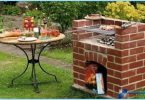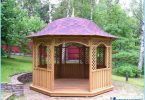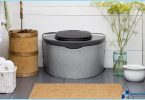The contents
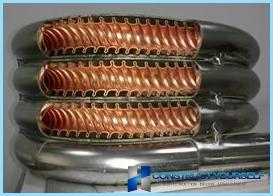
The heating device generating heat by combustion of fuel, are not able to work properly without a system of dimetidine or simply a chimney. Through a chimney into the atmosphere are derived toxic products of combustion that are hazardous to health and life of man. However, in the chimney along with the exhaust gases to escape quite a large amount of useful heat that could be useful for space heating. In order to prevent leakage of precious heat into the chimney you can install a special heat exchanger, which significantly increases the efficiency of the heat generating device.
The principle of operation and design ↑
Currently, there are different variants of heat exchangers for flue design and operation which, in General, similar. The heat exchanger comprises a hollow body with inlet and outlet pipes. In the casing mounted «brake» the mechanism, which is used for exhaust gases. Usually, this system is installed on the axis of the valve cutouts. The damper can be rotated, creating a zigzag chimney of different lengths. The setting of the valves gives the opportunity to establish the most effective ratio of heat transfer and the draft in the chimney, while not violating safety standards during operation. There are more simple models of heat exchangers, without a system of controlled valves.
What material should you use ↑
Heat exchanger for chimney is best done from food stainless steel. Even in the presence of high temperatures, physical parameters of the metal does not change as the welds come out pretty strong, and Nickel in accession to the reaction with oxygen creates a protective film, resistant to acids and salts.
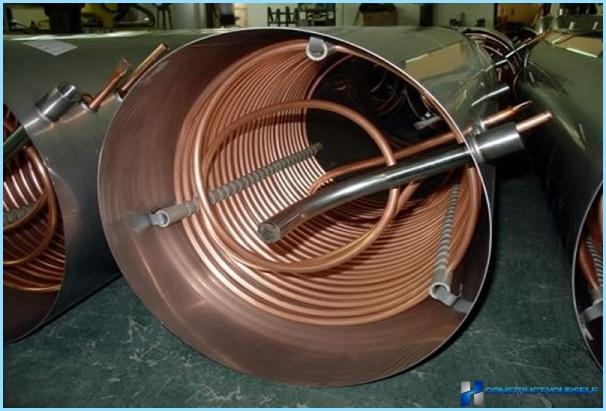
If we talk about the use of zinc, when heated up to 200?C it begins to evaporate, and when 500?C concentration of vapor in air reaches the dangerous mission to man mark. But if you installed it on the device galvanization, and while it is not heated above 200?C, it is possible not to worry. And to use galvanized material because it enhances the mixing of air flowing around the device. Although this exchanger is not provided for permanent space heating, but in order to quickly warm up, for example, a bath or a loft is suitable.
Independent installation of the heat exchanger is fairly easy. This device can be mounted on a conventional stove, and then to revet with a brick, as well as the oven. Laying bricks can be performed on the edge strength of the structure will not suffer.
The purpose and features ↑
The heat exchanger intended for the abstraction of heat from circulating in the chimney heated air. The design of the device depends on the diameter and shape of the fume collection tube, material which was used to create the heat exchanger capacity of the heat generating device and the heat carrier.
Heat exchangers klassificeret, depending on the coolant liquid and air. Devices air the most easy to manufacture, however, they have not the greatest efficiency. These devices need better material and performance, but more efficient than the device with air coolant.
Liquid heat exchanger ↑
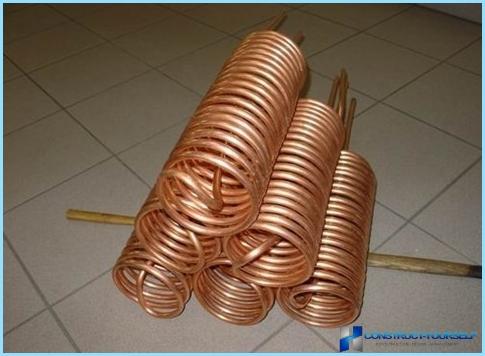
Standard heat exchanger used with the liquid coolant is a metal coil, with high thermal conductivity directly contrasting with the inner surface of the chimney. In order to better heat transfer and safety, the coil is placed in a metal enclosure and keep the inside non-combustible insulation material, usually basalt wool.
The whole structure is mounted on a section of the chimney. Through the casing of the heat exchanger output ends of the coil and attached to a heating system, at the top where you put the surge tank. For the manufacture of coil is best suited annealed copper tube. In addition, this heat exchanger due to the high coefficient of thermal conductivity will be 7 times less than the unit of steel.
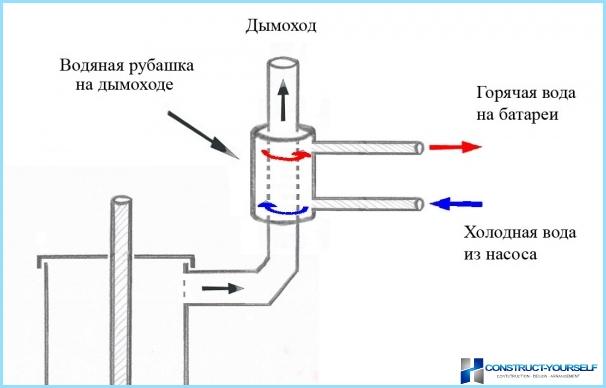
The fluid heats up, expands, rises through the coil, and then through the pipe by gravity it goes to the radiator. When injected into the heated radiator liquid displaces the cold coolant which in the coil is reheated. Thus, the natural circulation of water through the system. To circulate the coolant through the system is required to accurately calculate the length and diameter of the coil, to withstand the angles of inclination of the feed and the return, and more. The importance of these calculations should not be underestimated, simply because a malfunctioning device is not as scary than the consequences of water hammer that can occur if coolant boiling.
However, this type of heat exchanger has its drawbacks, namely:
- the complexity of the calculations and production;
- continuous monitoring of temperature and pressure in the system;
- high coolant flow caused by the evaporation of fluid from the expansion tank. But if water is used, then the failure of the system in the winter, the fluid need to drain;
- a significant reduction in the temperature of the outlet gases, which can cause reduced traction and incomplete combustion of the used fuel.
However, despite these shortcomings, this exchanger may independently do any person know how to handle the tool and having at least a school knowledge of physics.
Air heat exchanger ↑
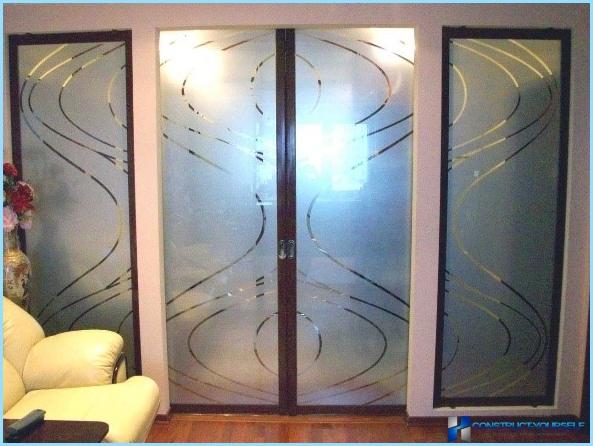
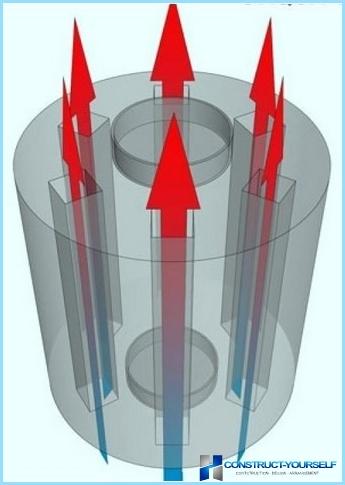
Bottom, on the principle of convection, cool air is entering the pipes, heat exits the top of the heat exchanger directly into the heated room. This principle of operation enables to increase the efficiency of the heat generating device and in 2-3 times to reduce fuel consumption.
To make the heat exchanger on the chimney is quite simple, having a welder, grinder, metal pipes of various diameters, willingness and ability to handle the tool.
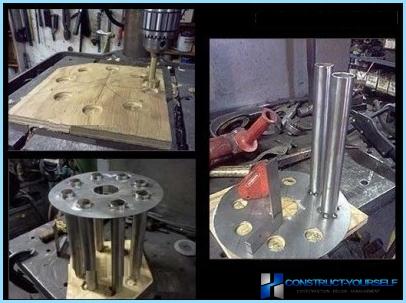
Material:
- sheet metal 350х350х1 mm;
- pipe with a diameter of inch and a quarter and a length of 2.4 m;
- a section of pipe with a diameter of 50 mm;
- a metal container or 20 l bucket of lubricating oil.
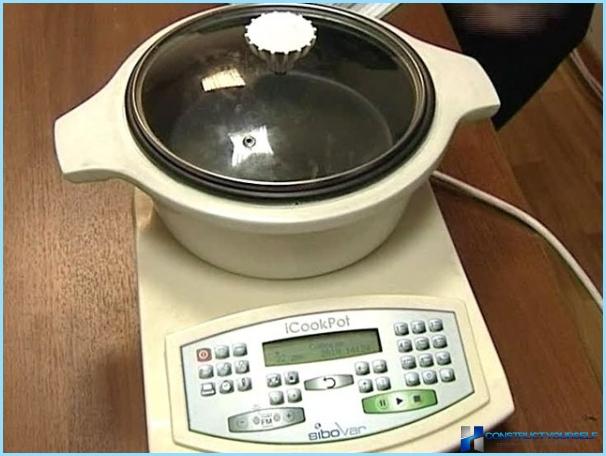
- to create face details, which you need from sheet metal cut out circle. It is necessary that the diameter of the plugs correspond to the diameter of the containers prepared in advance;
- in the middle of the stub is cut out the hole for 60 mm Central pipe;
- mark and cut along the edges of the circumference of the hole for the pipe about a inch and a quarter;
- these circles should be two;
- pipe диаметром1¼ grinder cut into 8 equal pipes with a length of about 30 cm;
- to the Central hole plugs to weld 300 mm section of pipe with a diameter of 60 mm;
- the circumference of the weld 8 segments 1¼pipe;
Should be out this design
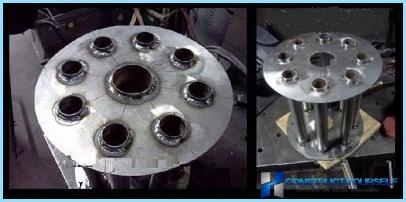
Next, you will need to make a cooked capacity of the heat exchanger housing. This will require:
- the bottom of the tank cut with a cutting machine;
- in the center of the sides of the hull to make a hole the diameter of the flue pipe;
- the side holes should be welded pipes of appropriate diameter;
- the prepared core insert in the housing and weld to bond it to the housing. The finished structure must be painted with heat-resistant paint.
Now we need to install a heat exchanger on the chimney and enjoy the warmth.
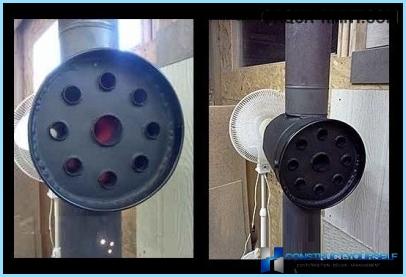
You can also look at the video the whole process of making a heat exchanger with their hands.
The pipe on the tin ↑
This variant of the heat exchanger is quite practical and simple. In principle, the chimney turns into a metal or copper tube that is heated constantly and move the air quickly becomes warm. Welded to the chimney spiral PI with argon or argon welding. You can also pin and tin, in advance Alesgerov chimney phosphoric acid.
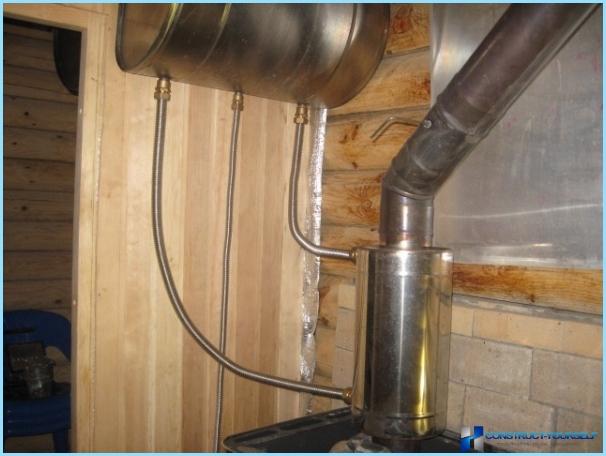
Corrugation ↑
To use this low-budget option, you need to take three corrugated aluminum pipe and wrap them around the chimney on the second floor or in the attic. The air in the corrugation will be heated from the walls of the chimney and it can be redirected to any room. And in order that the heat transfer was more efficient to wrap a corrugated pipe with foil.
Can also be installed in the attic on the chimney pipe special heat exchanger working on the principle of Kolpakova furnace – heated air rises, and when cooled gradually lowered. This design has a significant advantage – usually a metal pipe chimney is heated to such an extent that it is impossible even to touch, and in this case, the heat exchanger significantly reduces the risk of fire or burns.
Some masters advanced stone design mesh with stones to collect and retain heat, and garnish the base of the heat exchanger. Attic room to be more cozy, warm and can even be used as a shelter in the cold season.
As you can see, to make yourself an effective heat exchanger on the chimney is not so difficult. Enough to be able to handle the tool, have the necessary materials and the desire. Fabricated heat exchanger, not only will you be able to make the room more warm, but also save money, reducing fuel consumption.

